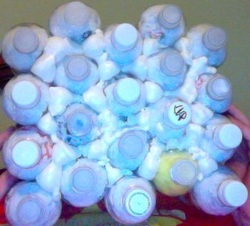Craigslist is my best friend! For the cabin I am attempting to either build or purchase second-hand all of our necessary materials. Again this is making our cabin not only cost efficient but also environmentally sound. It is amazing how many serviceable and good quality items are replaced by homeowners and builders. The saddest part is that these items are often not replaced for lack of functionality but rather for aesthetics. And the aesthetics could conceivably be achieved with just a little elbow grease. The following list details the items that I have already purchased and the price I paid for each:
- 20 small double-hung, double-paned, vinyl windows: $10 each. These windows were picked up from a window dealer as models yet they are fully functional. (There may be a trade off in efficiency versus more modern windows, yet the small size and the other thermal properties of the building help to offset this.)
- 1 Steel Exterior Door: $50. This door was replaced after a few years of use with a fancier design. It came prehung and predrilled. At this point it needs a coat of paint and a knob/lockset.
- 175 feet of flexible drain pipe: $50. This pipe will be used to construct a french drain at the foundation of our cabin. We needed 150 feet approximately but it is always good to have a little extra. This was purchased from a landscaper that had some left over from a job. New price is usually $1 a foot.
- Bathroom Sink, Base Cabinet, Mirrored Medicine Cabinet: $30. Completely functional and well maintained set. This was purchased from a person "flipping" a house and upgrading the kitchen and bath. It is tiny but perfect for the tiny bathroom that we have planned.

 RSS Feed
RSS Feed